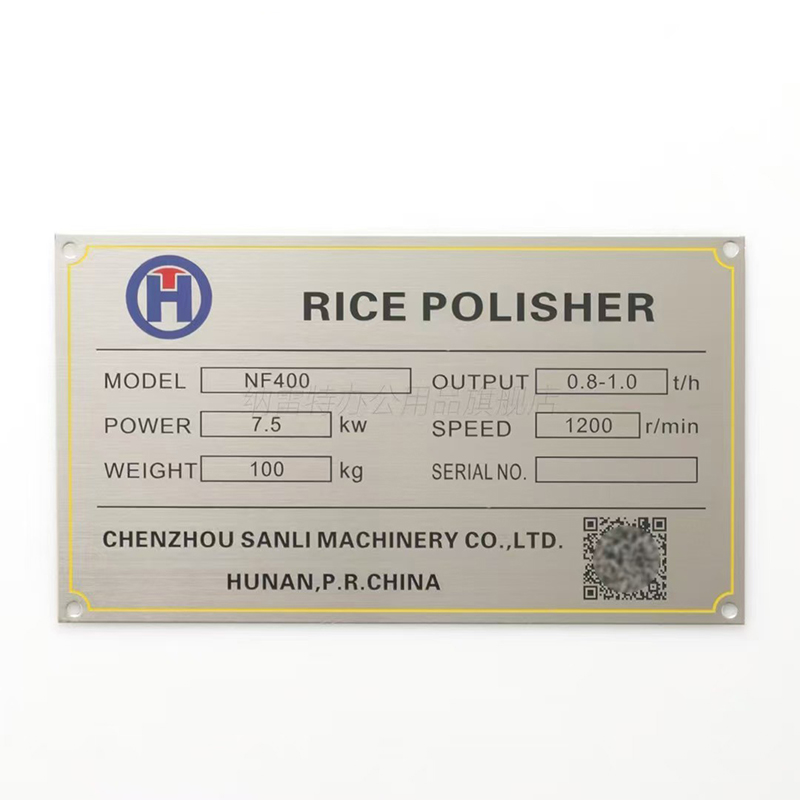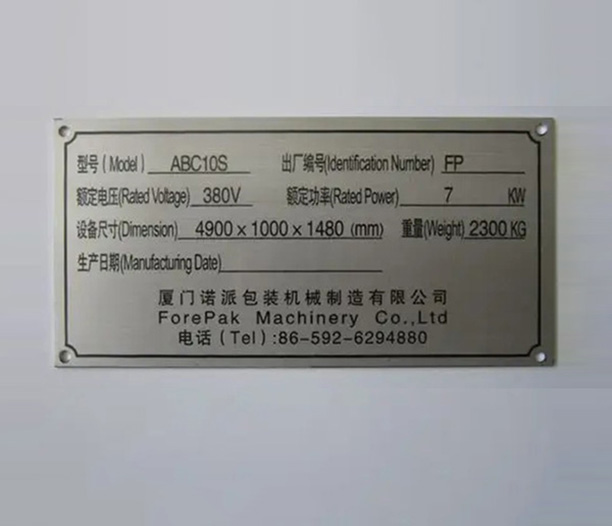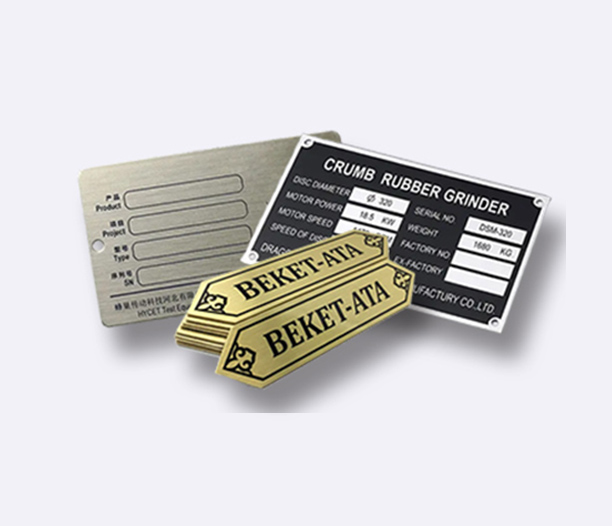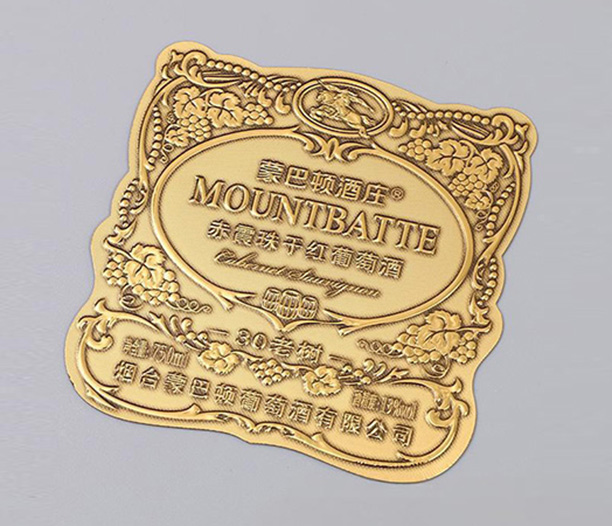In the world of asset identification, inventory management, and industrial tracking, the need for reliable, long-lasting solutions is paramount. Enter stainless steel barcode tags – the robust, high-performance workhorses designed to withstand the most demanding environments. Unlike their plastic or paper counterparts, these tags offer an unparalleled combination of durability and precision, ensuring your critical data remains readable for years, even decades. This comprehensive guide delves deep into the world of stainless steel barcode tags, exploring their unique advantages, diverse applications, various types, and key selection criteria. Whether you're managing a high-temperature manufacturing plant, tracking surgical instruments in a sterile hospital, or safeguarding assets in an outdoor yard, understanding the capabilities of these tags is essential for optimizing your operations and protecting your investments.

Why Choose Stainless Steel Barcode Tags? The Unmatched Advantages
The decision to use stainless steel barcode tags over other materials is driven by a requirement for extreme resilience and longevity. These tags are engineered to perform where others fail, offering a suite of benefits that justify their investment.
Exceptional Durability and Longevity: Made from grades like 304 or 316 stainless steel, these tags are inherently resistant to impact, abrasion, and crushing. They cannot be torn, cracked, or easily deformed like plastic or paper labels. They are built to last the entire lifespan of the asset they are attached to, eliminating the need for frequent and costly re-tagging.
Superior Resistance to Harsh Environments: This is where stainless steel barcode tags truly shine. They are impervious to moisture, chemicals, solvents, and extreme temperatures. Whether exposed to prolonged UV radiation, salt spray, industrial cleaning agents, or autoclave sterilization cycles (reaching over 135°C/275°F), the substrate remains intact, and the barcode surface remains legible.
Permanent and Tamper-Evident Identification: Once attached, typically with industrial-grade adhesives or mechanical fasteners like rivets or welding, stainless steel barcode tags are extremely difficult to remove without destruction. This makes them ideal for security applications and asset tracking, as any removal attempt will visibly damage the tag, providing clear evidence of tampering.
Reliable Scan Performance in Difficult Conditions: The barcode etchings on these tags are typically laser-marked directly onto the stainless steel surface. This creates a high-contrast, permanent mark that won't fade, peel, or rub off. The result is a consistently high first-read rate, even in dirty, oily, or wet conditions where paper labels would become unreadable.
Hygienic and Easy to Clean: The non-porous, smooth surface of stainless steel prevents the harboring of bacteria, mold, and other contaminants. This makes stainless steel barcode tags the ideal choice for industries with strict hygiene protocols, such as food and beverage processing, pharmaceutical manufacturing, and healthcare, as they can be repeatedly and aggressively cleaned without degradation.
Common Applications and Use Cases for Stainless Steel Barcode Tags
The unique properties of stainless steel barcode tags make them indispensable across a wide range of challenging industries. Their ability to endure where other labels cannot transforms operational efficiency and data integrity.
Manufacturing and Industrial Settings: In factories and plants, these tags are used to track machinery, tools, and production line components. They withstand exposure to oils, coolants, extreme heat from welding or curing ovens, and physical impact from moving parts.
Healthcare and Sterile Processing: Surgical instruments, which undergo rigorous sterilization in autoclaves, are prime candidates for stainless steel barcode tags. Laser-marked tags allow hospitals to track instrument sets, manage usage cycles, and ensure patient safety through precise traceability.
Oil, Gas, and Energy Sectors: Equipment used in drilling, refining, and distribution is exposed to corrosive chemicals, extreme pressures, and harsh weather. Durable stainless steel barcode tags provide reliable identification for valves, pipes, and machinery, ensuring safety and maintenance compliance.
Agriculture and Farming: From tracking livestock with ear tags to identifying heavy machinery, stainless steel tags resist mud, manure, moisture, and physical abrasion, providing a permanent identification solution.
Aerospace, Automotive, and Defense: These sectors require absolute certainty in part identification and traceability over decades. Stainless steel barcode tags are used to track critical components, from engine parts to airframe structures, throughout their entire service life, surviving vibration, fuel exposure, and temperature fluctuations.
Outdoor Asset and Yard Management: For tracking assets stored outdoors—such as shipping containers, transformers, and railway components—these tags provide permanent identification that can endure years of rain, snow, sun, and temperature swings.
Types and Customization Options of Stainless Steel Tags
Not all stainless steel barcode tags are created equal. They come in various forms and can be highly customized to meet specific application requirements.
Material Grades:
Grade 304 (A2 Stainless Steel): The most common grade, offering excellent corrosion resistance and durability for most industrial environments.
Grade 316 (A4 Stainless Steel): Offers superior corrosion resistance, particularly to chlorides and acids. This "marine-grade" stainless is ideal for highly corrosive environments like chemical plants, offshore platforms, and coastal areas.
Barcode Encoding and Marking Methods:
Laser Etching/Engraving: The most prevalent and reliable method. A laser permanently removes material from the surface to create the barcode and human-readable text. This creates a high-contrast mark that is integral to the metal itself.
Dot Peening: A pneumatic or electromagnetic stylus creates a series of dots to form the barcode. This is a lower-cost option but may not offer the same resolution and scanability as laser etching.
Barcode Types: Common linear barcodes (Code 128, Code 39) and 2D codes (Data Matrix, QR Codes) can be applied. 2D codes are increasingly popular due to their ability to store large amounts of data in a very small space.
Physical Form Factors:
Flat Rectangular Tags: The standard shape, suitable for adhesive or mechanical attachment to flat surfaces.
Flag Tags: Designed to be bent around cables, wires, or hoses for secure attachment.
Custom Shapes: Tags can be manufactured in specific shapes to fit a particular component or for brand recognition.
Attachment Methods:
Industrial Adhesives: High-strength epoxy or acrylic adhesives suitable for clean, flat surfaces.
Mechanical Fasteners: Holes can be drilled for attachment using rivets, screws, bolts, or zip ties.
Welding: Some tags are designed with pre-welded studs or have features that allow them to be welded directly onto metal assets.

How to Choose the Right Stainless Steel Barcode Tag for Your Needs
Selecting the correct stainless steel barcode tag is critical for project success. Consider the following factors to ensure optimal performance and return on investment.
Assess the Operating Environment: This is the most important factor. Will the tag be exposed to chemicals? What specific chemicals and at what concentrations? What is the temperature range? Will it be subjected to abrasion, impact, or pressure washing? The answers will dictate the required stainless steel grade and marking method.
Determine the Data Requirements: How much data do you need to encode? A simple serial number can be handled by a linear barcode, while a full asset history is better suited for a 2D Data Matrix code. Also, consider whether human-readable text is necessary alongside the barcode.
Choose the Appropriate Attachment Method: The surface material and conditions will determine the best way to affix the tag. A smooth, clean metal surface may work well with a high-bond adhesive. A rough, oily, or uneven surface, or an asset that experiences high vibration, will require a mechanical fastener like a rivet.
Verify Scanner Compatibility: Ensure that your barcode scanners are capable of reading the type of barcode you choose (especially if using high-density 2D codes) and that they perform well on the reflective surface of metal. Some scanners have specific "metal surface" modes to enhance read rates.
Partner with a Reputable Supplier: Work with a manufacturer or supplier who has expertise in metal asset tags. They can provide valuable guidance on material selection, marking techniques, and attachment options. Look for a provider that offers samples so you can test the tags in your real-world environment before committing to a large order.
Installation and Maintenance Best Practices
Even the most durable tag can fail if installed incorrectly. Proper installation is key to maximizing the lifespan of your stainless steel barcode tags.
Surface Preparation: For adhesive-backed tags, the surface must be thoroughly clean, dry, and free of oil, dust, and grease. Use a appropriate solvent cleaner and allow it to fully evaporate before application.
Application: Follow the manufacturer's instructions precisely for adhesive application, which often involves applying firm, even pressure for a specified amount of time. For mechanically attached tags, ensure fasteners are tightened to the correct torque to avoid damaging the tag.
Testing: After installation, scan the tag with your production scanners to ensure it reads reliably from the required distances and angles.
Maintenance: While largely maintenance-free, it is good practice to include the tags in periodic asset audits. Wipe them clean with a cloth if they become covered in dirt or grime that could potentially obstruct the scanner.
In conclusion, stainless steel barcode tags represent the pinnacle of durable, permanent asset identification. While the initial per-unit cost may be higher than that of disposable labels, their total cost of ownership is invariably lower due to their unparalleled lifespan and reliability. They eliminate the hidden costs of re-labeling, mis-scans, and data loss that plague inferior identification solutions. By carefully considering your environmental challenges, data needs, and attachment requirements, you can select the right stainless steel barcode tags to create a robust tracking system that protects your assets, ensures operational efficiency, and provides critical data integrity for years to come. Investing in this technology is an investment in the long-term accuracy and reliability of your entire tracking operation.






